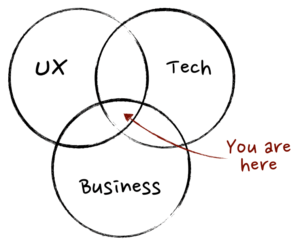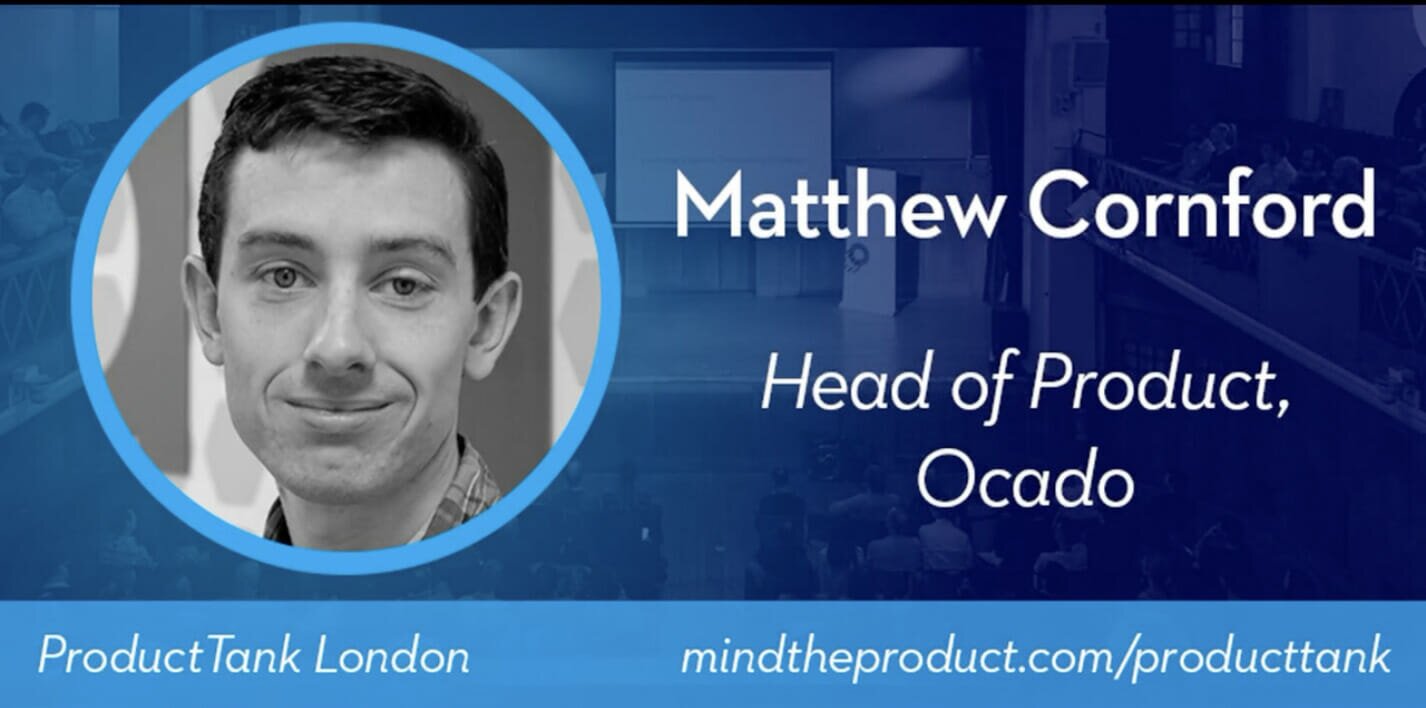I often get asked what a product manager is. What do they do? Where do they come from? How do you get into product management? Why do they like sharpies so much?

In his book Inspired, Marty Cagan describes the job of the product manager as “to discover a product that is valuable, usable and feasible”. Similarly, I've always defined product management as the intersection between business, technology, and user experience (hint – only a product manager would define themselves in a Venn diagram). A good product manager must be experienced in at least one, passionate about all three, and conversant with practitioners in all.
The Three Pillars of Product Management
Business
Product Management is above all else a business function, focused on maximising business value from a product. Product Managers should be obsessed with optimising a product to achieve the business goals while maximising return on investment. Sorry, this does mean that you are a suit—but you don't have to wear one.
Technology
There's no point defining what to build if you don't know how it will get built. This doesn't mean a Product Manager needs to sit down and code. However, understanding the technology stack and level of effort involved is crucial to making the right decisions. This is even more important in an Agile world where Product Managers spend more time daily with the development team than with anyone else inside the business.
User Experience (UX)
Last but not least the Product Manager is the voice of the user inside the business and must be passionate about the user experience. Again this doesn't mean being a pixel pusher but you do need to be out there testing the product, talking to users and getting that feedback first hand— especially in a start-up.
What Do Product Managers Actually Do?
Why do you need this breadth of skills? Because the role itself is incredibly broad and varied and you'll be using them every day.
Vision
It starts with setting a vision for the product. This requires you to research, research, and research some more your market, your customer, and the problem they have that you're trying to solve. You have to assimilate huge amounts of information—feedback from clients, quantitative data from your web analytics, research reports, market trends and statistics. You need to know everything about your market and your customer, and then mix all that information with a healthy dose of creativity to define a vision for your product.
Once you have a vision, you have to spread the word in your business. Get dogmatic, evangelical even, about the utopia that is your product. If you can't get passionate about it, you're in the wrong job or you didn't come up with a very good vision. Your success, and that of your product, relies on every team member. From sales to a developer, understanding that vision and being at least a little bit passionate about it as well is important.
Build a roadmap
And then you switch gears again and start building an actionable plan to reach that vision. A roadmap of incremental improvements and iterative development that take you step by faltering step closer to that final vision. This is when all that hard work preaching the good word pays off. Your team throw themselves into coming up with better designs, better code, and better solutions to the customers' problem.
Detail, detail, detail
Now we get really detail-oriented. As you work day in, day out with the development team as a product owner—defining and iterating the product as you go, solving problems as they pop up, and closely managing scope so you can get the product out on time.
The product is finally out there and suddenly you're spending your days poring over data again. You're constantly looking at how customers use the product, talking to them about the product, and generally eating, sleeping and breathing the product. Did you solve the right problem? Do your users get the product? Will they pay for the product?
And then you do it all over again. And these days it's not a waterfall process. You're not doing this step by step, you're doing this for a dozen products or features at any one time, switching from strategy to tactics in the blink of an eye.
Sound tough?
Sure it's a tough job but it's just about the most fun you can have with your clothes on—certainly the most fun you're going to get paid to do. You get to define the very essence of a product, design solutions to your customers' problems, work with everyone in the business and play a very large part in your business's success. We're the unsung heroes of the tech world—or at least we'd like to think so…







